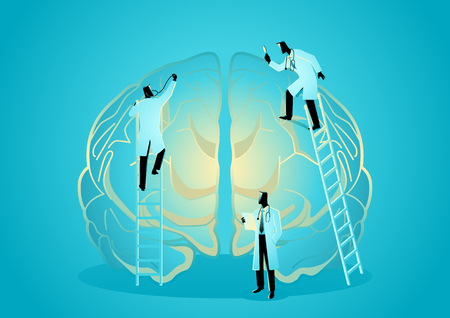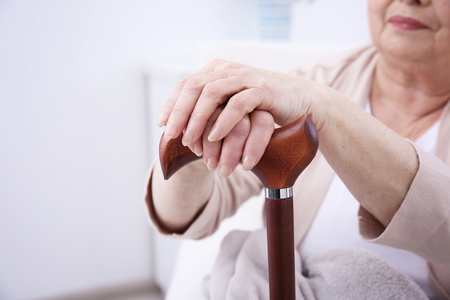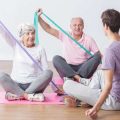Understanding Memory Loss: Causes and Impact
Memory loss is a common challenge, especially as people age. It can range from minor forgetfulness to more serious conditions that interfere with daily life. Understanding the reasons behind memory loss is important for finding the right support and therapies. In this section, we’ll look at what causes memory loss and how it affects individuals and families across the United States.
Common Causes of Memory Loss
| Cause | Description |
|---|---|
| Alzheimer’s Disease | The most common cause of dementia, leading to progressive memory decline and changes in thinking skills. |
| Mild Cognitive Impairment (MCI) | A condition where someone has noticeable memory problems but can still manage everyday activities independently. |
| Other Neurological Conditions | Includes strokes, Parkinson’s disease, brain injuries, and other illnesses that affect the brain. |
| Medical Issues & Lifestyle Factors | Depression, vitamin deficiencies, medication side effects, or alcohol use can also impact memory. |
How Memory Loss Impacts Daily Life
Memory loss can make everyday tasks—like paying bills, remembering appointments, or following recipes—much harder. People may feel frustrated or embarrassed when they forget names or important dates. It’s also common to repeat questions or stories without realizing it.
The American Family Experience
In the U.S., families often play a big role in caring for loved ones with memory loss. This can bring families closer together, but it can also be stressful. Many Americans juggle work, parenting, and caregiving responsibilities at the same time. The emotional toll can be significant, especially when family members see changes in someone they love.
Impact on Caregivers
- Emotional Stress: Worrying about a loved one’s safety and well-being can lead to anxiety or depression among caregivers.
- Financial Burden: Costs for medical care, home modifications, or professional help add up quickly.
- Social Changes: Families might have less time for friends or hobbies as caregiving becomes a bigger part of their lives.
This overview highlights why evidence-based therapies for memory loss are so important—not just for those experiencing memory challenges, but also for their families and communities across America.
2. Cognitive Stimulation Therapy: An Evidence-Based Approach
What is Cognitive Stimulation Therapy (CST)?
Cognitive Stimulation Therapy, often called CST, is a structured program designed to help people with mild to moderate memory loss or dementia. It involves a series of enjoyable activities and discussions that aim to improve thinking skills, memory, and overall mental wellbeing. CST has gained popularity in the United States as more research highlights its benefits for older adults.
The Science Behind CST
CST is grounded in scientific studies that show regular mental exercises can slow down cognitive decline. Researchers have found that participating in group-based cognitive activities can help boost attention, language skills, and problem-solving abilities. The approach is non-pharmacological, meaning it does not involve medication, making it safe and well-tolerated for most seniors.
How CST is Applied in the U.S. Healthcare System
In the United States, CST programs are commonly offered in senior living communities, adult day centers, and some outpatient clinics. Trained therapists or facilitators guide small groups through sessions typically held once or twice a week. These sessions are covered by some insurance plans if prescribed by a healthcare professional. The focus is on creating an engaging and supportive environment where participants feel comfortable sharing and learning together.
Common Group Activities and Exercises in CST
| Activity Type | Description |
|---|---|
| Word Games | Playing crossword puzzles, word searches, or naming games to stimulate language skills |
| Reminiscence Discussions | Sharing stories from the past, looking at old photos, or discussing historical events to enhance memory recall |
| Puzzle Solving | Working on jigsaw puzzles or brainteasers that require teamwork and logical thinking |
| Creative Arts | Engaging in drawing, painting, or simple crafts to encourage self-expression and focus |
| Music Sessions | Listening to familiar songs, singing along, or playing simple instruments to trigger positive emotions and memories |
| Orientation Activities | Talking about today’s date, weather, or current news to help with reality orientation |
Why CST Works for Seniors in America
CST fits well into American senior care because it values social interaction and lifelong learning—two things many older adults enjoy. By focusing on group participation and meaningful activities, CST helps seniors stay mentally active while also building friendships and community connections.

3. Computerized and Digital Interventions
Technology is changing the way we approach memory loss in the United States. Today, older adults have more digital options than ever before to help boost their memory and keep their minds active. These technology-based therapies are easy to access, user-friendly, and can be used at home or anywhere with an internet connection.
Brain-Training Apps
Brain-training apps are designed to exercise your mind much like physical workouts strengthen your body. Popular apps like Lumosity, Elevate, and BrainHQ offer a range of games and puzzles targeting memory, attention, processing speed, and problem-solving skills. Many of these apps allow users to track their progress over time and adjust the difficulty level as they improve.
Popular Brain-Training Apps in the U.S.
| App Name | Main Features | Accessibility |
|---|---|---|
| Lumosity | Personalized training plans, daily games | Smartphone, tablet, computer |
| Elevate | Focus on reading, writing, math skills | Smartphone, tablet |
| BrainHQ | Science-backed exercises for aging brains | Smartphone, tablet, computer |
Telehealth Cognitive Programs
Telehealth has made it easier for older Americans to access professional support without leaving home. Cognitive programs led by licensed therapists or specialists can be delivered via video calls. These programs may include personalized exercises, goal-setting sessions, and ongoing feedback. Medicare and many insurance providers now cover certain telehealth services, making them more affordable for seniors.
Benefits of Telehealth Cognitive Programs
- No need to travel—sessions from the comfort of home
- Regular check-ins help maintain motivation and track progress
- Programs can be tailored to individual needs and schedules
- Available in both urban and rural areas across the U.S.
Online Memory Workshops and Support Groups
Online workshops and support groups connect older adults with peers facing similar challenges. These interactive sessions often include memory exercises, educational talks, group discussions, and even social activities—all designed to stimulate the brain while building a sense of community.
Examples of Online Memory Workshops
- AARP’s Staying Sharp program offers virtual classes focused on brain health strategies.
- The Alzheimer’s Association hosts online support groups and memory cafes for individuals with memory loss and their families.
- Local senior centers often provide digital workshops using platforms like Zoom or Google Meet.
Accessibility for Older American Adults
The rise of digital interventions means that more seniors can participate in memory-support programs regardless of where they live. Most apps and online services are designed with simple interfaces and large text for easy navigation. Family members or caregivers can also help set up devices or join sessions to provide extra support.
Quick Tips for Getting Started:
- Choose one app or program to try first—don’t feel pressured to do too much at once.
- If you’re unsure how to get started, ask a family member or local librarian for help setting up your device.
- Look for free trials before committing to a paid subscription.
- Check if your health insurance covers any telehealth cognitive services.
4. Reminiscence Therapy and Person-Centered Approaches
What Is Reminiscence Therapy?
Reminiscence therapy is an evidence-based approach for supporting people with memory loss. It focuses on encouraging individuals to recall and share personal memories from their past, often using familiar items or activities. This therapy can help spark communication, increase feelings of self-worth, and boost mood.
Key Techniques in Reminiscence Therapy
| Technique | Description | Examples Relevant to American Culture |
|---|---|---|
| Storytelling | Encouraging people to talk about meaningful life events. | Sharing stories about family road trips, favorite holidays like Thanksgiving, or childhood memories from school days. |
| Music | Playing songs that have personal or cultural significance. | Listening to Elvis Presley hits, classic rock from the 1960s, or singing along to patriotic tunes like “America the Beautiful.” |
| Memory Boxes | Using boxes filled with personal items to trigger memories. | A box containing baseball cards, old photographs, military medals, or letters from loved ones. |
The Importance of Personal Histories
One of the most important aspects of reminiscence therapy is its focus on each person’s unique life story. By centering therapy around individual experiences—such as recalling a first job at a local diner or sharing traditions from family reunions—people feel valued and understood. This approach makes therapy more meaningful and enjoyable.
Intergenerational Activities: Bridging Generations
Reminiscence therapy often includes intergenerational activities that connect older adults with younger family members or children in the community. For example, families might create scrapbooks together, bake traditional American recipes passed down through generations, or watch old home movies as a group. These activities not only support memory but also strengthen family bonds and preserve cultural traditions.
Simple Ways to Get Started with Reminiscence Therapy at Home
- Ask open-ended questions about your loved one’s favorite childhood games or local neighborhood events.
- Create a playlist of songs from different decades that are likely to be familiar and comforting.
- Gather keepsakes and make a memory box together, talking about each item as you go.
- Encourage sharing of photo albums and telling stories behind each picture.
- Bake cookies using a family recipe and discuss the memories attached to it.
This person-centered approach brings joy and connection into daily life while helping those with memory loss stay engaged in their own story.
5. Integrating Evidence-Based Therapies into Everyday Life
Making Memory Support Part of the Daily Routine
Incorporating evidence-based therapies like cognitive stimulation and reminiscence therapy into everyday life doesn’t have to be complicated. With a little planning and creativity, families, caregivers, and healthcare providers in the U.S. can support loved ones with memory loss at home or in community settings. Here are some practical strategies and tips to get started:
Simple Ways to Use Cognitive Stimulation at Home
- Game Nights: Play board games, card games, or puzzles that encourage thinking and conversation. Classic games like Scrabble, Uno, and Bingo are both fun and beneficial.
- Brain-Boosting Apps: Use digital tools designed for older adults, such as Lumosity or CogniFit. Many public libraries offer free access to these programs.
- Daily Challenges: Try crosswords, word searches, or Sudoku together each morning as part of a routine.
Bringing Reminiscence Therapy Into Everyday Moments
- Photo Albums: Look through family photo albums together and talk about the people, places, and events pictured.
- Music Playlists: Create playlists of favorite songs from different decades; music often sparks positive memories and conversations.
- Cultural Cooking Nights: Prepare recipes from the past or from your loved one’s heritage. Cooking together is both stimulating and comforting.
Combining Therapies for Greater Benefit
You don’t have to stick with just one approach. Combining cognitive stimulation with reminiscence activities can make each session more engaging. For example, while doing a puzzle (cognitive stimulation), talk about a family trip (reminiscence). Or while listening to old songs (reminiscence), play a musical trivia game (cognitive stimulation).
Community Resources Across the U.S.
| Resource | Description | How to Access |
|---|---|---|
| Alzheimer’s Association | Offers free support groups, education sessions, and activity ideas for families | alz.org |
| Aging & Disability Resource Centers (ADRCs) | Local centers provide information on adult day programs and memory cafés | Find your local center at eldercare.acl.gov |
| PBS Brain Health Resources | Videos and activity guides focused on brain health for older adults | pbs.org/brainhealth |
| Your Local Library | Libraries often host memory cafes, book clubs, and tech classes for seniors | Contact your nearest library branch for details |
Troubleshooting Common Challenges
- If your loved one loses interest quickly, try shorter sessions or switch up activities frequently.
- If frustration arises, reassure them and gently redirect attention without insisting on completing tasks.
- If you need extra help, reach out to local support groups or professionals—many offer virtual meetings now.
The key is consistency, patience, and making these therapies feel like natural parts of daily life. Even small steps can make a big difference in supporting memory health at home or in your community.


